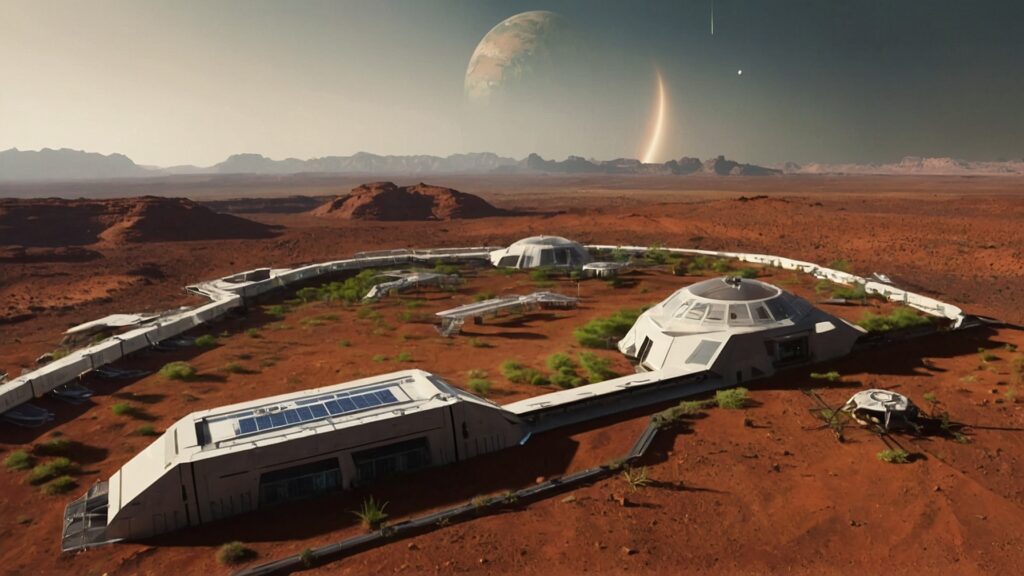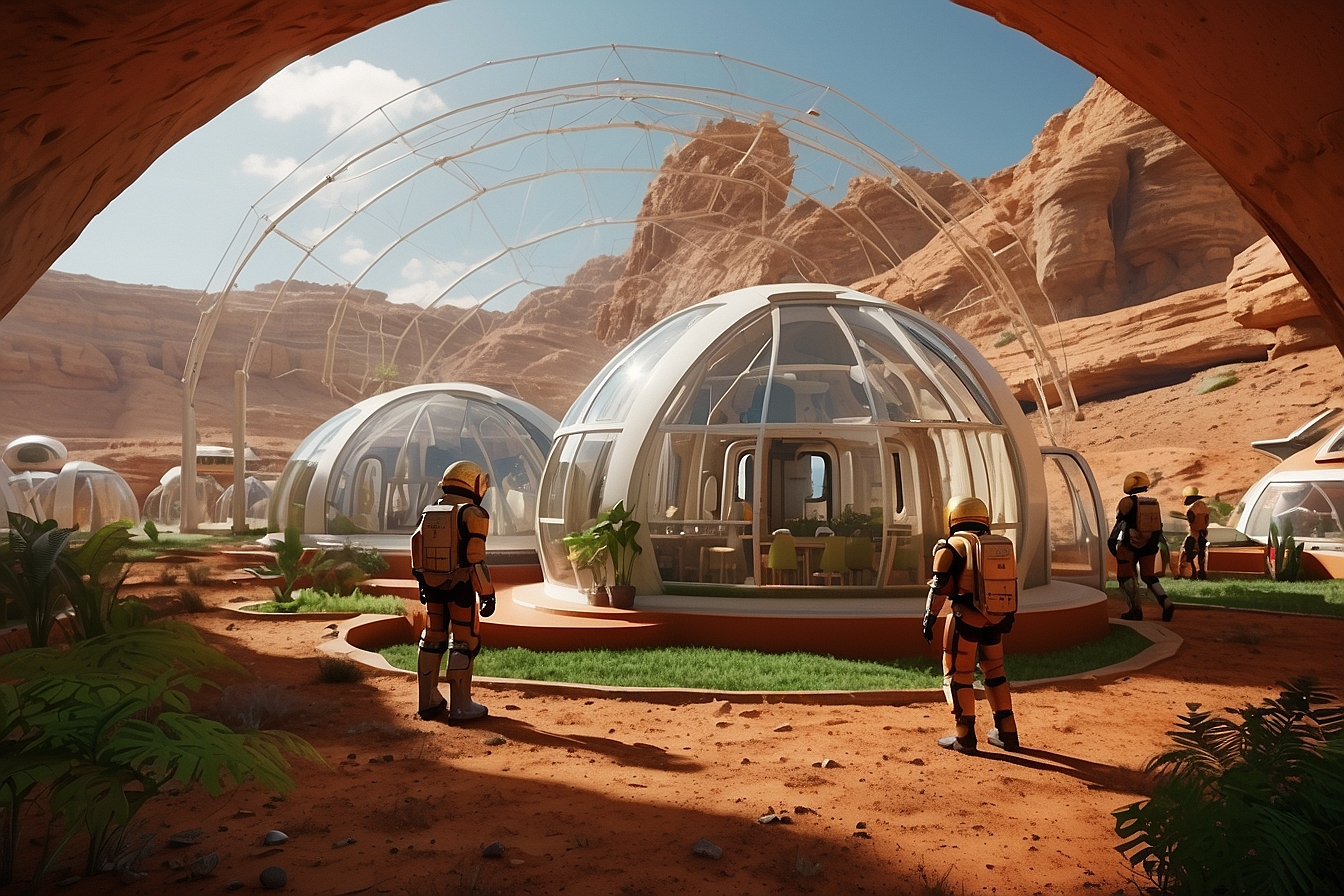Adverts
Let's embark on an exciting journey into the future, a destination that not only challenges the limits of human imagination but also redefines our relationship with the universe.
Adverts
The audacious dream of colonizing Mars, the Red Planet, is becoming increasingly tangible thanks to unprecedented advances in science and technology.
This is an invitation for you to dive with us into this epic adventure that promises to not only expand the horizons of humanity but also offer new perspectives on the sustainability and future of our own planet, Earth.

The Mars Dream: Closer Than Ever
Adverts
The idea of making Mars a second home for humanity stopped being science fiction and became a viable objective.
Visionary companies led by brilliant minds like Elon Musk, with his SpaceX, are at the forefront of this mission, developing technologies that could, in the not too distant future, transport the first colonists to Mars.
But the journey to Mars goes beyond simply transporting humans through space; it involves creating a habitable atmosphere, afforestation of the planet and the development of sustainable ecosystems.

Afforesting Mars: A Lung for the Red Planet
See too:
One of the most fascinating stages of this project is the afforestation of Mars. Through bioengineering and terraforming, scientists propose modifying the Martian atmosphere, currently composed mainly of carbon dioxide, to make it more similar to Earth's, rich in oxygen.
Planting trees and other plants would not only help create a breathable atmosphere but also regulate the planet's temperature, making it more welcoming to human life and other terrestrial life.
Creating an Atmosphere: The Challenge of Terraforming
Creating an atmosphere on Mars is perhaps one of the most complex and intriguing challenges we face. This process would involve the release of gases that can cause a controlled greenhouse effect, warming the planet until liquid water can exist on the surface.
Furthermore, the introduction of microorganisms capable of converting carbon dioxide into oxygen would be essential to this terraforming effort.
These strategies, although ambitious, are based on solid scientific and technological principles.
Technology and Innovation: Tools for a New Frontier
Technology plays a crucial role in all aspects of Mars colonization. From interplanetary travel to building sustainable habitats, including terraforming, every step depends on technological innovations.
We're talking about advances in space propulsion, renewable energy, life support systems, space agriculture and much more.
These innovations not only make life on Mars possible, they also have the potential to benefit Earth by offering solutions to environmental and energy challenges.

The Future of Earth: Lessons from Mars
The mission to colonize Mars offers a unique opportunity to reflect on the future of Earth. By facing the challenges of sustaining life in such an inhospitable environment, we can learn valuable lessons about sustainability, conservation and the importance of living in harmony with our environment.
The Martian adventure reinforces the idea that humanity's future depends on our ability to care for our planets, both the home we are trying to create and the one we are trying to preserve.

Conclusion: An Invitation to the Future
The colonization of Mars represents one of humanity's most audacious undertakings, a testament to our insatiable curiosity and desire to explore the unknown.
This project is not just about establishing a human presence on another planet; it's about improving our understanding of life, sustainability and our place in the universe.
We invite you to follow this journey, as each discovery on Mars offers valuable insights to address challenges here on Earth.
Join us on this epic adventure into the unknown, as together we can shape a promising future for all life in our solar system.
Reference Links:
- SpaceX and the Mission to Mars: SpaceX
- Terraforming and Afforestation of Mars: NASA
- Technologies for Mars Colonization: MIT Technology Review



